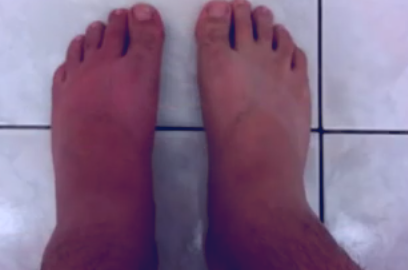Gout is a severe form of arthritis and is detected by sudden, intense attacks of pain. There is redness in the joints and they also become tender. It can affect anyone equally but women are more vulnerable to it especially after their menopause. People who suffer from gout wake up in the middle of their sleep due to the strong sensation.
Gout attack – symptoms
Some of the signs of a gout attack are as follows:
- Intense pain in the joints: It mostly attacks the bigger joint of the toe and can also occur on the feet, knees, hands, ankles or wrists. The pain is maximum in the first few hours of the attack.
- Continuous discomfort after the pain goes away.
- The joints that have been affected become red, swollen and have a sensation of burning.
- The mobility decreases in the joint and can continue further.
There is no precise answer related to the duration of the attack. It depends on many factors such as the duration of the first gout attack and the gap, the number of times you have had the gout flare, the medications one is taking to ease it etc. Gout is not curable and hardly goes away but can be efficiently controlled. If a person has had many gout attacks then it will last longer and a person will suffer for a few days but if it remains untreated it can last for an unpredictable time.
The one best way to control it is to decrease the uric acid to at least 5mg/dL. But even when a person is on this treatment, the gout attack can last for some time. If the allopurinol dose or uric dose is strong then it should only last 2 or 3 days. Incorrect doses can lead to prolonged attacks and after effects. It often happens that the dose of allopurinol dose is not sufficient to lower the uric acid to 5mg/dL. It is actually a better idea to aim for a below 5 level such as 2 to 3 to be able to maintain a 5. However if the level remains to2 or 3 it will help in lowering the duration of the gout attack. The pain also becomes less intense and the discomfort decreases. The other ways to tackle the uric acid is changing lifestyle habits, avoiding excessive medicines and staying away from stress related activities.
Consumption of pain relievers and gout attack duration
With the right pain killer the attack doesn’t last for more than 2 to 3 days. With long term medication the attack doesn’t last for more than a few hours. The attacks can be best controlled by taking care of the inflammation part. It is important to prevent it from spreading, reducing its intensity and blocking the pain that it causes. Thus, a gout attack can last for as much as a few weeks to as low as a few hours. What matters the most is controlling the uric acid, otherwise the gout flare would be constant and there will be permanent pain and too much discomfort.
Stubborn or prolonged gout occurs as a result of lack of attention to the increased uric acid and inadequate treatment. Stubborn or inadequate gout can last for almost a month even with the help of pain killers as the uric acid is left untreated. It is also important to understand that gout cannot be generalized and is personal. Thus its duration and intensity can differ according to the person’s medical history and treatment.
The following factors increase the risk of a gout attack:
- A diet that is high in red meat and sea food.
- Consumption of too much sugar, sweetened drinks, alcohol etc increase the chances of gout and also increase the uric acid.
- Being overweight also leads to more uric acid and longer duration of the attack
- People with high blood pressure, diabetes, heart problems and metabolic disorders take more time to get out of the gout flare.
- People with a family history of gout are also more vulnerable
- It lasts longer in women, older men and women in their menopause.
- Surgeries in the past or trauma can also be linked to higher duration of the gout attack.

